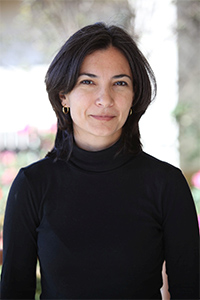Gladys Krause joins W&M curriculum and instruction faculty

Tell us a little about your background and what brought you to W&M.
I hail from Colombia and traveled to the United States in 2005 to improve my English as I applied to graduate school. My background in Economics originally led me to consider a graduate degree in educational policy, but mysterious forces drew me to explore the UTeach Natural Science program which had recently launched at The University of Texas at Austin. After completing the program and working with local schools, I returned to the College of Education at UT Austin for a Ph.D. in Mathematics Education.
My first job as a doctoral student introduced me to the complicated intersection of language and mathematics as part of a team working to “transadapt” assessment items from English to Spanish. We were charged with making the test questions accessible to culturally and linguistically diverse students. The process of ensuring that mathematics problems written in English were rendered in a Spanish style equally accessible to speakers from Mexico or Colombia or Guatemala — or from any other Spanish-speaking country — helped me appreciate the rich diversity of the Spanish language and how subtle differences in vocabulary, grammar, and even cultural points of reference directly impact mathematics instruction.
Later in my graduate studies I began teaching courses on methods for teaching elementary mathematics, where I introduced pre-service teachers to the ways in which children understand mathematical concepts and to teaching practice that takes advantage of this understanding. This close work with pre-service teachers and their students, particularly in the bilingual context, shaped the focus of my current research. As I delved into bilingual students’ misapprehensions in learning mathematics, I realized the need to study teacher development in order to understand the intricacies and exigencies of teacher preparation.
At William & Mary, I will have the opportunity to continue working in teacher preparation and expand this work to bilingual communities in the surrounding area.
What’s your area of research and what question are you most passionate about answering right now?
My current research unites several aspects of teacher-student interaction in the context of studying fractions:
- how children think about fractions and how this thinking develops,
- how teachers can understand and probe students’ understanding of fractions, and
- how to support both beginning and experienced teachers alike in developing expertise in responsive teaching.
These investigations lie squarely within a well-established field of study. But these issues have taken on new meaning as I now try to apply them to the study of pre-service teachers’ decision making when questioning bilingual students to understand their mathematical thinking. This work opens the door to the as yet unexplored territory of responsive mathematics teaching in multilingual settings.
My research builds on the growing body of work studying Cognitively Guided Instruction (CGI). CGI strives to couple understanding of children’s mathematical thinking with teaching moves that capitalize on their thinking. Responsive Teaching in Elementary Mathematics, a research collaboration in which I participated as a postdoctoral researcher, in fact extends research on CGI to the domain of fractions. Since my work focuses on the practice of teaching, it has a natural home in the classroom in the context of preparing future mathematics educators.
Not all aspects of learning confine themselves to the classroom. In particular, though, Spanish-speaking immigrant parents are occasionally mentioned in the literature, their portrayal is often superficial and rarely expressed through their own words. My research has also begun to fill this critical gap by making public the voices of immigrant parents as they narrate their experiences navigating channels of parent-teacher communication in public schools across different states. At the same time the discipline should take account of teachers’ own educational histories and how these have affected their own attitudes. Thus I also study the experiences of bilingual pre-service teachers in the mathematics classroom and how these experiences are shaping their teaching practices.
Which class are you most looking forward to teaching?
Elementary Mathematics Methods! In that course we explore what it means to learn and teach mathematics with understanding. We will focus on how children think about mathematics and learn to use what we know about children’s thinking to design and adapt instructional tasks. Also, my mathematics methods class stresses making mathematical content relevant to the linguistically and culturally diverse population of students in elementary school classrooms.
The School of Education is known for community engagement. How do you plan to be involved with the local community – students, families, schools, and organizations?
Thanks to the support of other faculty members in the School of Education I have already started the process of reaching out to teachers in the area. I will be working together with Dr. Barko-Alva to support her efforts in the dual language program in the community. Together we will be working to develop a robust elementary mathematics curriculum that is responsive to bilingual students’ mathematical ideas.